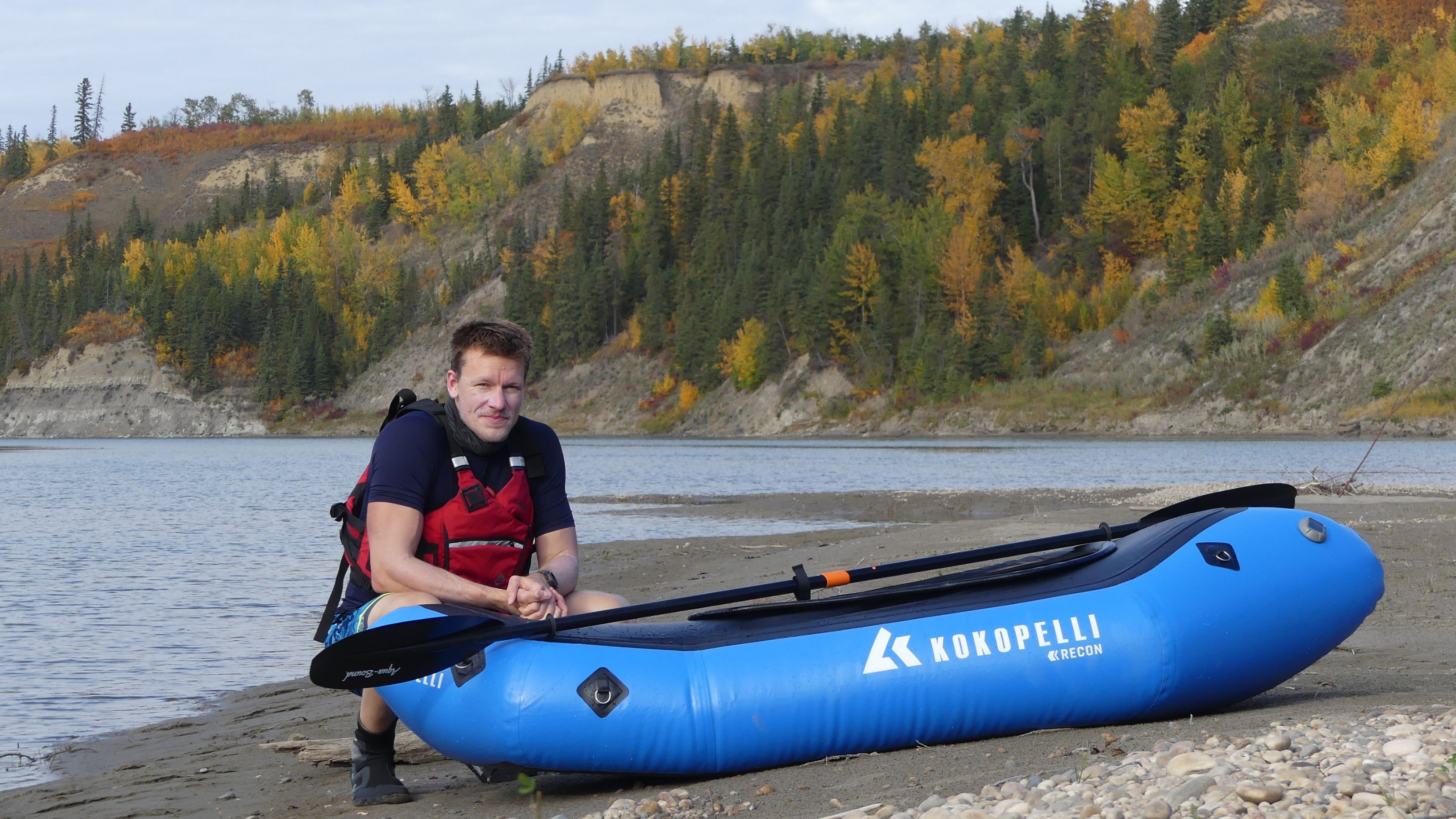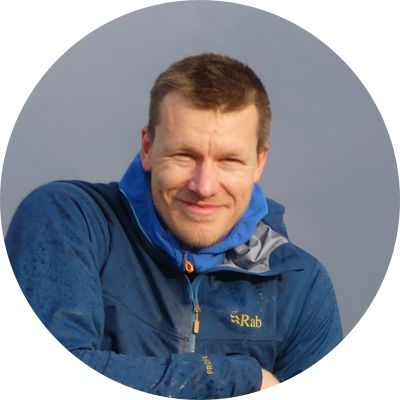The primary motivation for Dr. Timm Döbert, postdoctoral fellow with the Watershed Science and Modelling Laboratory in the Department of Earth and Atmospheric Sciences, has always been counteracting the loss of biodiversity.
In this week’s spotlight, Timm shares how his work bridges adventure, science and conservation through the art of storytelling, in hope for improved planetary stewardship.
How do you describe your work to people who don’t work in your field?
I study the human footprint on natural ecosystems and native biodiversity, from deforestation of tropical rainforests to livestock grazing in temperate grasslands, striving to make a difference for wildlife and wild spaces.
What’s one big problem you want to solve through your work?
Amongst the varied and frequently inseparable socio-environmental crises, it’s the rapid loss of biodiversity that troubles me the most. Over the past millennia, humans have fundamentally altered the lands and the oceans and in that process, we have largely exterminated the planet’s abundant wildlife. Today, humans, livestock and pets make up 96% of terrestrial vertebrate biomass, while elephants, bison and all the other 60,000 wild vertebrates have been decimated to total less than 4%; the situation for marine organisms is just as dire. Not only are we wiping out the Earth’s biological riches, we are destroying our life support systems and endangering ourselves. Counteracting this trajectory has always been the primary motivation for my work.
What does the word “innovation” mean to you?
I like to think of it as “pioneering,” or exploring unconventional approaches to pressing issues. To share a personal example, during earlier stages of my academic career I would often grapple with the science-to-action conundrum, and specifically the question of why we continue to fall short in safeguarding the places and organisms that sustain our own well-being, despite an ever-increasing scientific knowledge base and impactful solutions at hand. In that process, I would question the real-world value of my research. Today I understand that a key challenge lies in science communication, our ability to disseminate scientific knowledge in ways that appeal to people’s hearts. Hard facts alone are insufficient to spur action, people first need to care.
What’s been your biggest a-ha moment — in life or work — so far?
About two years ago, I came across a Birdlife International map depicting the world’s eight major migratory bird pathways that crisscross the planet. Ever since, I have been fascinated by the idea of emulating the birds as they journey between continents, connecting the most distant corners of the planet. Not only are migratory birds exceptional athletes whose feats of endurance dwarf any human physiological capabilities but they are also modern-day canaries in the coal mine, vital messengers of planetary health. So, in June 2024, I will set out on my first expedition under the Flyway Heroes initiative, a 30,000 km bicycle and packraft traverse of the Americas, from Alaska’s High Arctic to the southernmost tip of Patagonia. The idea is to portray the wonder of bird migration and the importance of avian migrants to all of us through the lens of an epic human adventure. By blending extreme sports with scientific exploration and conservation action, I hope to capture the interest of broad audiences, including the many people who don’t usually gravitate towards environmental stories.
How do you or your team come up with your best ideas?
Periods of solitude in the outdoors provide me with the ideal mind space for creative thinking. Within the city confines, paddling down the river in my inflatable expedition raft makes for the perfect escape, while the Prairie grasslands are my favourite out-of-town get-away.
What’s your favourite thing about working at the U of A?
Two things come to mind. In the professional realm, I believe the U of A holds tremendous, yet largely untapped scope for global leadership in systems transformation, and I am really excited to be part of that journey. With planetary tipping points — critical biophysical thresholds that mark dangerous points of irreversible change — emerging on the horizon, the U of A’s breadth of expertise across disciplines offers a unique pioneering space for rethinking our world. At a personal level, I absolutely love the setting of my CCIS office. In less than 15 minutes I can be packrafting on the North Saskatchewan or hitting the river valley trails for a run or bike ride.
Do you have a role model at the U of A? How have they influenced you?
My postdoctoral advisors, Assistant Professor Monireh Faramarzi (Earth and Atmospheric Sciences) and Professor Mark Boyce (Biological Sciences), have been outstanding mentors over the past four years. Their continuous support has allowed me to discover and craft my very own career path. I am also grateful to Professor Erin Bayne (Biological Sciences), who immediately embraced the Flyway Heroes concept and its unique approach to nature conservation. He will support a bioacoustic monitoring study that will not only help us study birds but also encourage local stewardship.
The U of A promises to Lead with Purpose as we build a university for tomorrow. How does your work help you lead with purpose?
My academic journey began in Germany, followed by degrees in New Zealand and Australia based on ecological research in tropical Asia, and finally two postdocs at the U of A. Being able to study in diverse socio-economic and cultural settings has been pivotal, not only to a better understanding of context-dependence in nature conservation, but to the challenge of innovating novel strategies for improving the status quo. Through my work as a global change scientist, I feel well-positioned to take direct action towards helping to solve the grand socio-environmental challenges of our lifetime. The Flyway Heroes initiative I designed to step up my leadership with purpose by uniquely integrating science, athletics and exploration into one cohesive story.
What’s next for you? Do you have any new projects on the horizon?
The “Wings of Survival” expedition is my next big adventure, and the teaser and mini documentary have just been released. Aside from improving my Spanish and training endless hours on the bike, I am excited to develop the science and outreach aspects of the project. I will be joined by Leanna Carriere, Canada’s first female decathlete, and along the route we will engage with local communities — youth in particular — in close proximity to critical migratory bird habitats to listen, learn and empower. As a great asset, Birdlife International, the largest international partnership for nature conservation, is already on board as a key strategic partner. Building a strong partnership network within the Edmonton community, including collaboration with U of A scholars, is also really important to us. Given the broad range of intertwined subject areas, such as athlete health and performance, nature conservation, bird ecology, Indigenous stewardship, human well-being, translating science into action, etc., we intend to make this a truly collaborative endeavour.
About Timm
Timm is a postdoctoral fellow in the Watershed Sciences and Modelling Laboratory in the Department of Earth and Atmospheric Sciences under supervision of Assistant Prof. Monireh Faramarzi. Close collaborators at the U of A include Professor Mark Boyce (Biological Sciences), Professor Edward Bork (Rangeland Research Institute), Dr. Majid Iravani (Alberta Biodiversity Monitoring Institute) and Professor Scott Chang (Renewable Resources). En route to his PhD at the University of Western Australia, he spent three years in a makeshift camp in Borneo’s rainforest at the Stability of Altered Forest Ecosystems (SAFE) project studying the impacts of tropical deforestation. He recently launched an initiative called Flyway Heroes which will see him cycle the global migratory bird flyways. The first expedition is a 30,000 km journey from Alaska to Patagonia (scheduled for June 2024) which will be featured in a documentary called “Wings of Survival”. Favourite lifetime moments include personal meetings with Sir David Attenborough and Prince William to discuss solutions to the global biodiversity crisis. Timm is a long-term Explorers Club member and competitive athlete. He recently completed the Patagonman Xtreme Triathlon in Chilean Patagonia. He is a committee member of the Climate Action Coalition at the U of A.
Innovator Spotlight is a series that introduces you to a faculty or staff member whose big ideas are making a big difference.
Do you know someone who’s breaking boundaries at the U of A? (Maybe it’s you!) We’re interested in hearing from people who are creating new solutions to make our world better. We want to feature people working across all disciplines, whether they’re championing bold ways of thinking, driving discovery or translating insights from the lab into the market.
Get in touch at blog@ualberta.ca.

